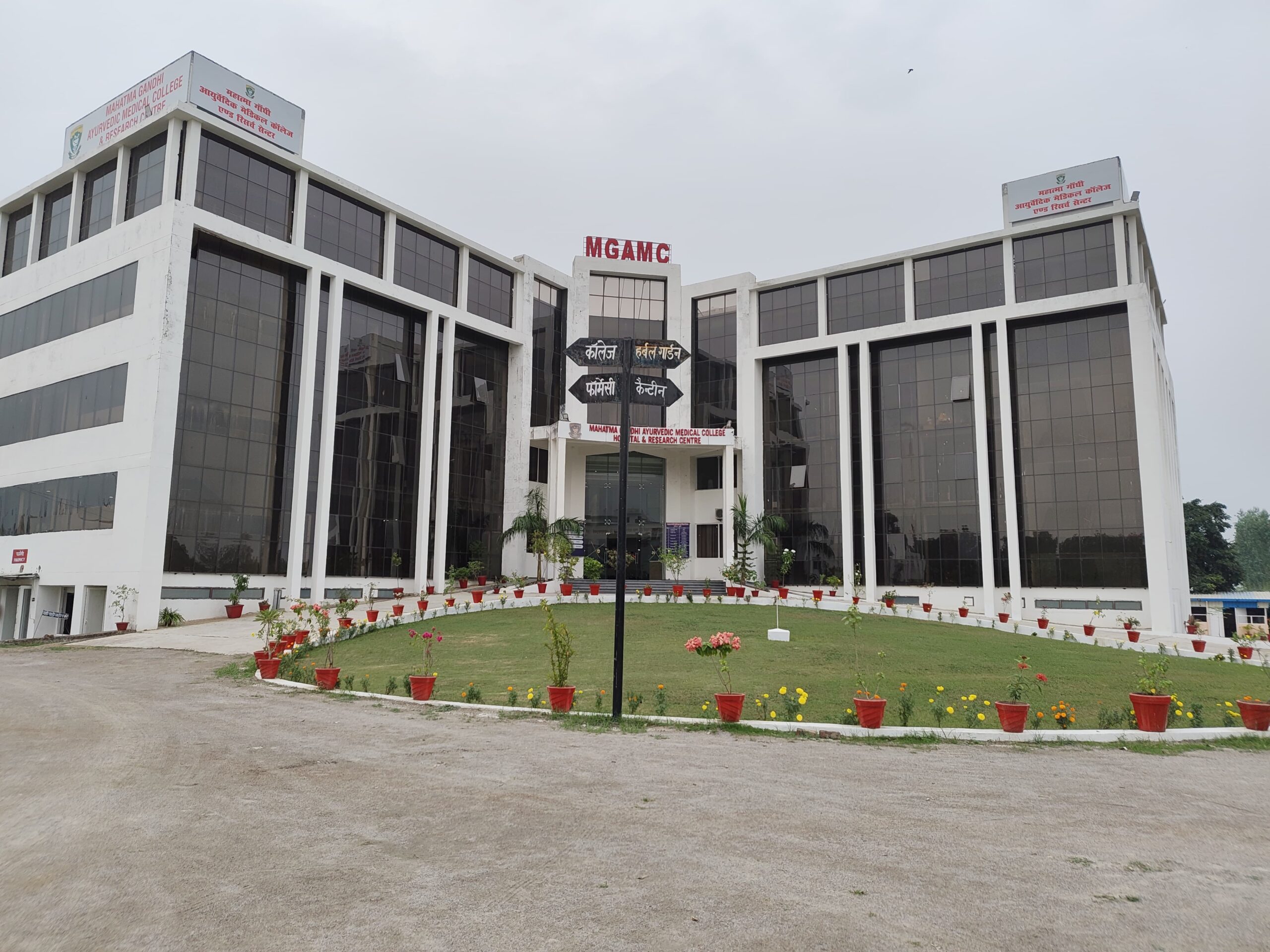In the heart of Lucknow, Uttar Pradesh’s cultural and historical epicenter, stands the Mahatma Gandhi Ayurvedic Medical College & Research Centre (MGAMCRC) – a beacon of traditional wisdom fused with contemporary medical innovation. Nestled in the serene locale of Khasarwara, Post-Banthara, Lucknow, this private institution embodies the ethos of Mahatma Gandhi: self-reliance, ethical healing, and service to humanity. Approved by the National Commission for Indian System of Medicine (NCISM) and recognized by the Ministry of AYUSH, Government of India, MGAMCRC is affiliated with a prestigious state health sciences university, ensuring a curriculum aligned with national standards.
A Legacy of Excellence: History and Vision
Though exact founding details are understated in public records, MGAMCRC has been operational since at least 2022, rapidly gaining repute through faculty recruitments and student successes. Inspired by Gandhiji’s principles of Sarvodaya (welfare of all) and Swadeshi (indigenous solutions), the college bridges 5,000-year-old Ayurvedic texts like Charaka Samhita and Sushruta Samhita with modern diagnostics.
The vision is clear: Produce globally competent Ayurvedic professionals who integrate Panchamahabhuta (five elements) principles with evidence-based practices. Under disciplined governance, the college emphasizes patient-centric care, community outreach, and research. Its location in Lucknow – home to historic Ayurvedic hubs like State Ayurvedic College – provides unparalleled access to diverse patient demographics, from urban elites to rural masses.
Key Milestones:
- NCISM Approval: Full recognition for BAMS, ensuring degree validity nationwide.
- AYUSH Ministry Endorsement: Compliance with the highest standards.
- Alumni Impact: Graduates leading clinics, wellness resorts, and research in Dabur, Himalaya, and Patanjali.
In 2025, amid the post-pandemic wellness boom, MGAMCRC’s focus on immunity-boosting therapies like Rasayana and Panchakarma makes it timely.
Academic Programs: Rigorous and Comprehensive
At the core is the flagship BAMS program – a 5.5-year rigorous journey (4.5 years academics + 1-year compulsory rotating internship). Intake capacity aligns with government norms, typically 60-100 seats, filled via merit.
Curriculum Breakdown (NCISM-prescribed):
| Year | Key Subjects | Focus Areas |
|---|---|---|
| 1st | Anatomy, Physiology, Sanskrit | Foundational sciences with Ayurvedic lens |
| 2nd | Dravyaguna (Pharmacology), Rasashastra | Herbal drugs, metallurgy |
| 3rd | Kayachikitsa (Internal Medicine), Panchakarma | Detox therapies, chronic disease management |
| 4th | Shalya Tantra (Surgery), Prasuti-Stri Roga | Ayurvedic obstetrics, minor surgeries |
| Internship | Clinical rotations in OPD/IPD | 24/7 hands-on in the attached hospital |
Teaching Pedagogy:
- Smart Classrooms: Interactive projectors, VR for anatomy.
- Dissection Halls: Cadaver-based learning.
- Seminars & Workshops: Weekly on Kriyas (therapies).
Admission Guide 2025-26: Your Step-by-Step Roadmap
Eligibility:
- NEET-UG 2025: Mandatory qualifier (min. 50% PCB in 10+2; 40% for reserved).
- Age: 17+ by Dec 31, 2025.
Process via UP AYUSH Counselling (upayushcounselling.ayush.gov.in):
- Qualify NEET: Aim 150-400 marks for private seats (Gen: ~300; OBC/SC/ST lower).
- Register (Aug-Sep 2025): Upload docs, pay ₹2,000.
- Choice Filling: Prioritize MGAMCRC.
- Rounds: 3 online + stray vacancy.
- Allotment: Merit-based; report for verification.
Expected Cutoff 2025 (based on trends):
| Category | NEET Marks | Rank Range |
|---|---|---|
| General | 250-350 | 3L-5L |
| OBC | 200-300 | 4L-6L |
| SC/ST | 150-250 | 5L-8L |
Documents: NEET scorecard, domicile, category certs.
Tip: Monitor AACCC for All India Quota (15%).
World-Class Infrastructure: A Healing Haven
Sprawling green campus (acres of herbal gardens) rivals top institutes:
- Attached Hospital: Multi-specialty, 100+ beds – High OPD (100+/day).
- Labs: 10+ advanced (Pathology, Microbiology integrated with Ayurveda).
- Library: 10,000+ books/journals; digital e-resources (AYUSH Research Portal).
- Hostels: Separate A/C/non-A/C for 300+ students; mess with Sattvic meals.
- Extras: Auditorium, gym, yoga hall, sports complex.
Fees & Scholarships: Affordable Excellence
Annual Breakdown (2025-26):
| Component | Amount (₹) |
|---|---|
| Tuition | 2.4 – 2.5 Lakh |
| Hostel+Mess | 75K-1 Lakh |
| Misc | 20K |
| Total | ~3.5 Lakh |
Frequently Asked Questions (FAQs)
Here are ten common questions prospective students ask about MGAMCRC, with answers.
Q1. What is the duration of the BAMS course at MGAMCRC?
A1. The BAMS course duration is 5½ years: 4½ years of academic study + 1 year of compulsory internship.
Q2. What is the eligibility criteria for BAMS at MGAMCRC?
A2. Candidates must have passed 10+2 with Physics, Chemistry, Biology, and obtained a valid NEET-UG score.
Q3. How many seats does the college offer for BAMS?
A3. The exact seats for each year may vary; prospective students should check latest notification from the college/university for the current academic session.
Q4. Does MGAMCRC have hostel facilities?
A4. Yes, separate hostels for boys & girls are available with modern amenities according to the college’s website.
Q5. What kind of hospital exposure will a BAMS student get here?
A5. The college has an affiliated hospital offering OPD, IPD, Panchakarma, surgery, diagnostics (including ECG), and pharmacy, giving students ample clinical practice.
Q6. What is the fee structure of the BAMS course here?
A6. The precise fee is not publicly listed in full detail; students should ask the college for latest fee structure including tuition, hostel, lab, and other charges.
Q7. What are the career options after completing BAMS from MGAMCRC?
A7. Career options include Ayurvedic physician, clinic/ hospital work, pharmacology & manufacturing, wellness/spa industry, teaching & research, or PG study in Ayurveda. Students should enquire about past alumni track record.
